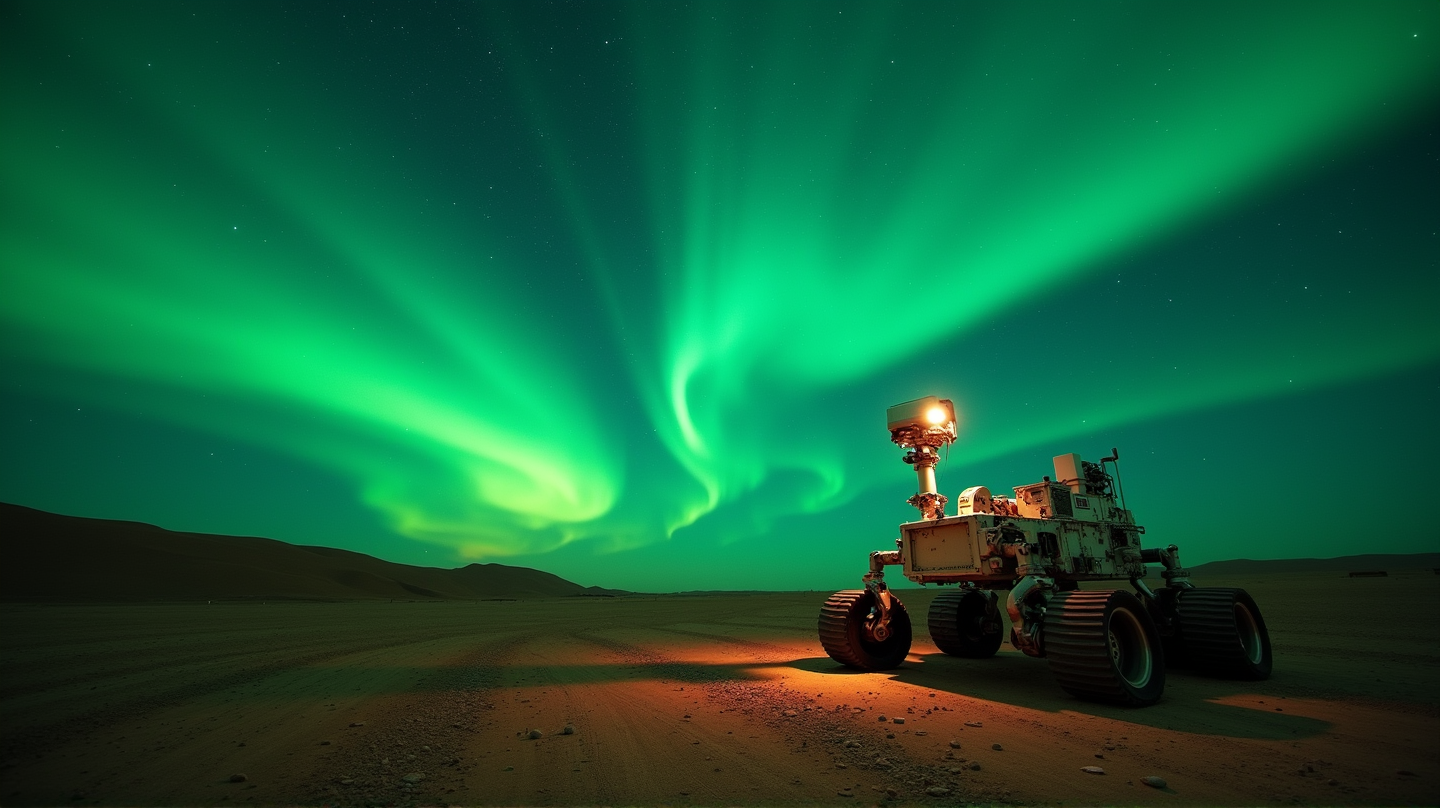The realm of space exploration has gifted us with many wonders, but none as ethereal as the first visible Martian aurora, captured by NASA’s Perseverance rover. On March 18, 2024, a subtle green glow danced across the Martian horizon, an achievement that opens new possibilities for future astronauts who might witness this spectacle firsthand.
Unveiling Martian Mysteries
The visible aurora reported in Science Advances is a groundbreaking observation, teasing what may await upcoming Martian settlers. “It would be a dull or dim green glow to astronauts’ eyes,” describes Roger Wiens, a planetary scientist from Purdue University.
In a universe where other planets have only revealed auroras to orbit-based observation tools—with details fleeting and invisible to the human eye—this discovery marks a poignant step in interplanetary meteorology. It’s an invitation to view Mars as not just a dusty expanse, but a dynamic atmospheric giant waiting to reveal its secrets to those who dare to explore.
The Science Behind the Glow
Auroras arise when charged particles from space engage with a planet’s atmosphere. Unlike Earth, which channels these displays towards its poles through a global magnetic field, Mars shows these majestic lights sporadically across its crust-magnetized surface. Here, Perseverance’s cameras grappled with capturing the faint display due to the absence of magnetic concentrations.
“According to Science News,” large shocks like coronal mass ejections—solar plasma clouds—trigger these auroras, painting the Martian sky with light. Perseverance, though situated near the equator, achieved this with foresight, alerted in advance by Wien’s team of scientists.
A Glimpse into the Future
Wiens proposes that the southern hemisphere of Mars, with its dense magnetization, could present even more vivid auroral displays. “Aurora in that area might look particularly strong,” he notes, hinting at the magnetic allure awaiting human exploration.
The Broader Exploration Context
This discovery positions Mars not just as a target for robotic research, but as an environment ripe for human interaction. As NASA forges ahead with manned missions, these glowing lights symbolize the outlined path of human curiosity—illuminated by newfound scientific phenomena.
One can only imagine the future where Martian nights might become not just scientific subjects but personal memories etched into the hearts of those who might one day live there. Mars, indeed, is no longer just a red dot, but a planetary canvas, awaiting its place in history.
The journey beyond our world is not just about knowing the unknown; it’s about the realm of possibilities these discoveries unlock. The artful dance of charged particles on Mars is merely a prologue to humanity’s upcoming odyssey in space.
